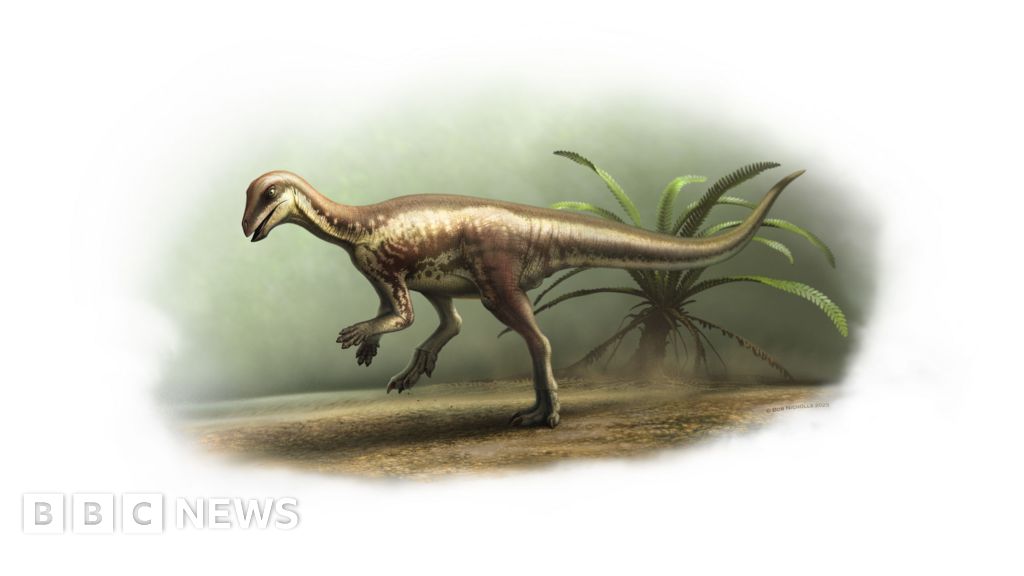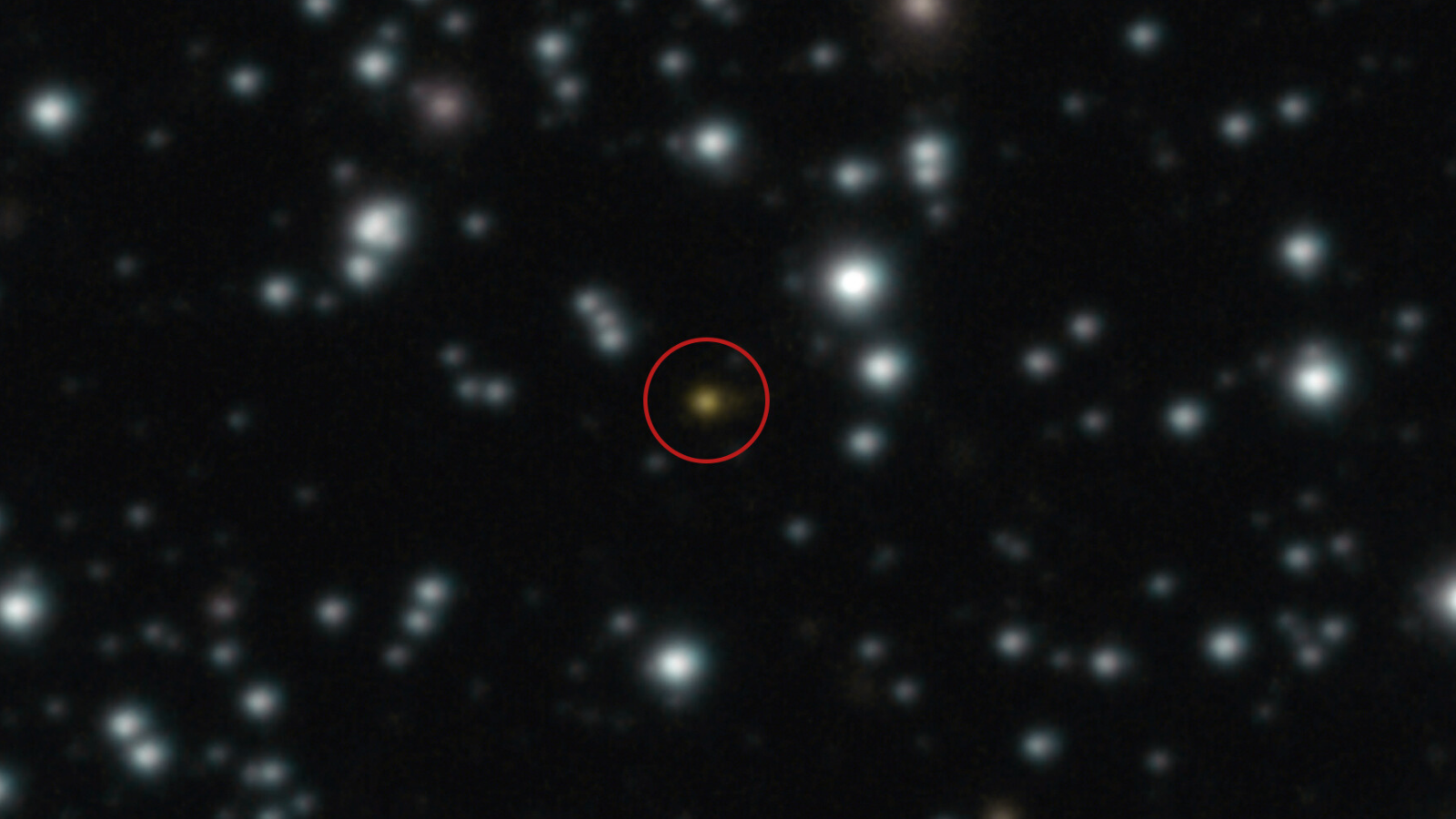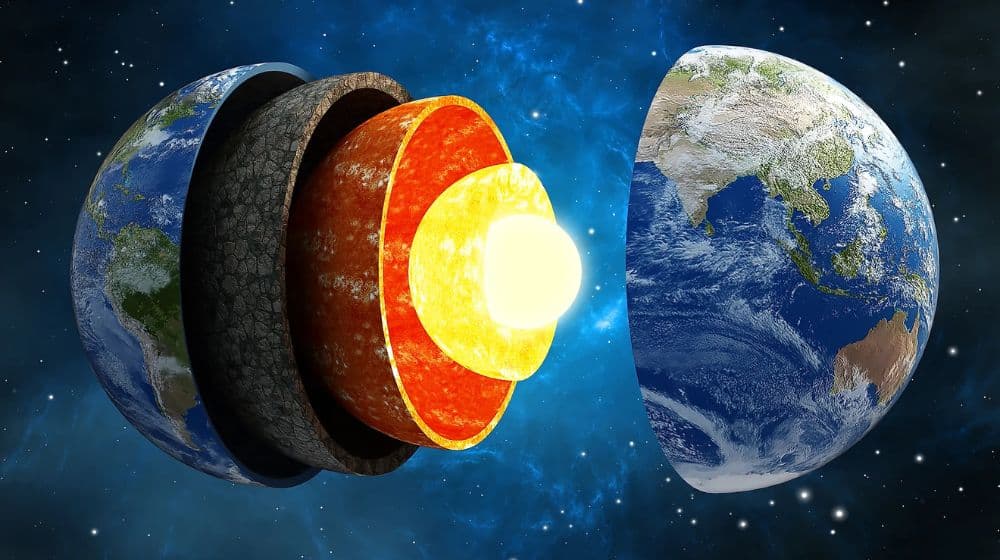Newly Discovered Dog-Sized Dinosaur Reveals Insights into Jurassic Evolution

A remarkable discovery has emerged from the Natural History Museum (NHM) in London, where scientists have identified a new species of dinosaur that intriguingly resembles a dog in size. Initially classified as a Nanosaurus, this small dinosaur has now been officially named Enigmacursor mollyborthwickae, which translates to “puzzling runner.” This species thrived approximately 150 million years ago during the Late Jurassic period, cohabiting with much larger dinosaurs, notably the iconic Stegosaurus.
The unveiling of the Enigmacursor marks a significant occasion, as it is set to be the first new dinosaur exhibit at the NHM since 2014. BBC News was granted exclusive access to observe the Enigmacursor prior to its grand public reveal. The discovery is poised to enhance our understanding of the evolutionary timeline, particularly concerning how early small dinosaurs evolved into the enormous and often peculiar species that later dominated the planet.
Professor Paul Barrett, a palaeontologist at the museum, expressed his anticipation regarding the insights this discovery could provide. The Enigmacursor, measuring approximately 64 centimeters tall and 180 centimeters long, is comparable in height to a Labrador Retriever but possesses larger feet and a notably elongated tail, which Professor Susanna Maidment conjectures was likely longer than the rest of its body.
As the team readies the dinosaur for display, conservators Lu Allington-Jones and Kieran Miles are diligently assembling the skeleton onto a metal frame. “I’m being extremely careful not to damage it at this stage, especially before it’s revealed to everyone,” remarked Ms. Allington-Jones, who leads the conservation efforts.
Mr. Miles pointed out the robust structure of the dinosaur’s hips, indicating it was built for speed. He also noted the dinosaur’s smaller front arms, suggesting it may have used them to forage for plants. As the team scrutinizes the skeletal remains, they are keenly aware of the subtle anatomical differences that distinguish the Enigmacursor from its close relatives.
Upon the dinosaur's arrival at the museum, it was initially believed to be merely another Nanosaurus, a name that has been applied to numerous small dinosaur specimens since the 1870s. However, through detailed examinations and comparisons with the archetype specimen of Nanosaurus, which is now recognized to consist merely of rock impressions with no actual bones, the NHM team concluded that the Enigmacursor represents a unique species.
Professor Maidment emphasized the importance of correctly categorizing species in paleontology, stating, “If there are inaccuracies in our classifications, it undermines our entire understanding of dinosaur diversity.” This assertion led to the NHM declaring the Nanosaurus category obsolete, suggesting that other small dinosaur specimens from this era may also warrant re-evaluation as distinct species.
This discovery could significantly enhance paleontological research, particularly concerning the diversity present during the Late Jurassic period. Smaller dinosaurs, like the Enigmacursor, are believed to be close to the evolutionary origins of larger dinosaur groups, which became increasingly prominent in subsequent periods. “Understanding how these early creatures evolved helps us trace the pressures that eventually led to the emergence of their more gigantic descendants,” added Professor Barrett, highlighting the crucial link between these early species and their colossal successors.
The Enigmacursor’s fossilized remains are considered the most complete specimen of early small dinosaurs currently known, further solidifying the significance of this find at the Natural History Museum.




























